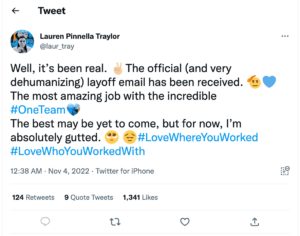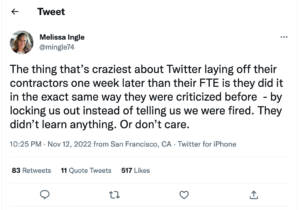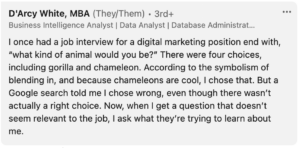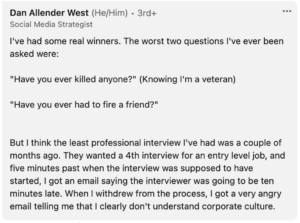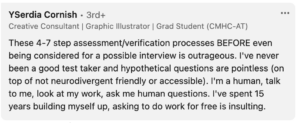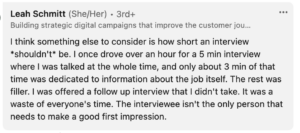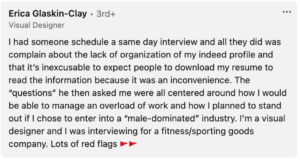We are still in the sizzle of a hot job market, which makes it harder to attract and (retain) the best freelance talent. To help you better understand how to succeed in this market, Creative Circle surveyed over 400 people to learn what they search for when applying to roles and how they see themselves in the more global work landscape.
Contract work can be a double-edged sword—higher pay, flexible schedules, and more diverse opportunities often come at the cost of benefits like healthcare and paid time off. A tight labor market has some independent workers re-evaluating what they want from the companies they work with—here are some exclusive insights to help you stay ahead of the pack.
Perception and Semantics
Contractor, freelancer, contingent worker, talent, candidate, or consultant—synonyms? Maybe not. When referring to non-full-time workers, we often use these terms interchangeably. However, some of the responses from our survey question, where we asked the workers to self-identify were unexpected. For many, the definitions are conditional on the type of work, length of the assignment, and if they are working through an agency or not.
—
“Contractor if working with a staffing company, freelancer if on my own.”
—
“If through an agency: contractor. If freelancing on my own: freelancer.”
—
“It depends on what the role is. Sometimes contractor, other times freelancer.”
—
“Both freelance and contract. Depends on length of the assignment.”
—
“The culture of the company that brings in the contractor determines the difference: some companies provide the same treatment to contractors as full-time employees, and some do not.”
Send Me All the Things
One of our survey questions asked: When working with a staffing company, what types of jobs do you want sent to you? Nearly 70% of those surveyed answered: Send me everything close to my role via email, even if it’s not a perfect fit as compared to the 16.7% who responded: Send only roles that match my experiences and preferences.
Given that one of the perks of working with a staffing company is to have opportunities sifted through and matched with candidate preferences, we were struck by the response to this question. Does this speak to the independent and multi-talented spirit of freelancers—a grasp for autonomy of choice in an uncontrollable world? Perhaps. With the job market still hot, what we have gleaned is that individuals want roles that offer growth and new experiences.
Do Benefits Outweigh Benefits?
One of the big draws of freelance work is that it is typically remunerated at a higher rate—a huge benefit. But perhaps, unsurprisingly, contract employees still often desire more generous benefits like health insurance when seeking freelance opportunities. There is a push/pull between the increased financial benefit of freelance versus the stability of full-time job that may pay less but comes with more benefits like healthcare and paid time off.
Many workers view the lack of benefit offerings as standard industry practice. Their perception seems to be conditional on the type of contingent worker they may be. For example, are they freelancing independently or working with a staffing agency?
The way temporary employees see themselves may influence their expectations when seeking roles. When asked to rank listed benefits in order of priority, 54% selected healthcare as their top priority. When asked, “Do staffing companies’ benefits packages influence your decision to work with an agency or not?” 48% responded “yes.”
Further investigation showed that when explicitly working for a staffing agency (i.e., Creative Circle), many participants consider healthcare benefits a mandatory offering. However, many responses also indicated that while insurance and other benefit offerings would be agreeable, they did not consider this a mandatory practice.
—
“It depends. If the assignment is going to be long-term and the client isn’t looking to hire me, then the benefits package will be a mandatory consideration. If I am working with Creative Circle to help me get hired by a client, then this is less of a consideration.”
—
“No. I’m a freelancer, which implies open-ended. If the rate is right, I’m not thinking about benefits. I’ll work the back end.”
—
“Health insurance is a must, especially when working freelance without a company like Creative Circle, it’s much harder to get reliable insurance that covers a lot.”
“Nothing is mandatory. Health benefits are nice….”
Maybe there’s a Magic Bullet?
Our survey findings show that freelance workers have different needs and desires that hinge on where they are looking for work. Many candidates consider benefits offerings when working with a staffing agency but are less likely to do so when pursuing independent freelance assignments. But perhaps there is a middle ground—Health Savings Accounts or HSAs.
These health accounts can be a great option for freelance workers and do not cost employers anything (though it may make the opportunity more attractive if they contributed). HSAs are mobile, so can travel from gig to gig, and can provide a measure of benefit, in a space where they are often not expected.
As the freelance world begins to look more and more like a traditional 9-to-5, companies are struggling to remain competitive when seeking top talent. With the addition of some stop-gap benefit measures, at little or no cost, agencies can diversify themselves, reaping a better (and happier) crop of candidates / contractors / consultants.
About the author.
An award-winning creator and digital health, wellness, and lifestyle content strategist—Karina writes, produces, and edits compelling content across multiple platforms—including articles, video, interactive tools, and documentary film. Her work has been featured on MSN Lifestyle, Apartment Therapy, Goop, Psycom, Yahoo News, Pregnancy & Newborn, Eat This Not That, thirdAGE, and Remedy Health Media digital properties and has spanned insight pieces on psychedelic toad medicine to forecasting the future of work to why sustainability needs to become more sustainable.

